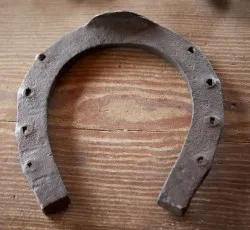Mount Vernon was George Washington’s home. It was also home to hundreds of enslaved people who lived and worked under Washington’s control.
In 1799, there were 317 men, women, and children enslaved at Mount Vernon’s five farms, which covered 8,000 acres. They made up more than 90% of the estate's population.
My people [must] be at their work as soon as it is light-work 'till is is dark-and be diligent while they are at it...
-George Washington, 1789

Biographies
Explore the lives of 19 people who were enslaved at Mount Vernon, whose stories were pieced together through George Washington's extensive records.
Learn more
Family Life
Families were often separated by miles. Field-workers could be assigned to any one of the five farms without regards to their wives, husbands, or children. So efforts had to be made to share whatever free time they could with loved ones.
Learn more
Food
The standard rations Washington allotted enslaved people were cornmeal and salted fish—almost all harvested by slaves themselves.
Learn more
Clothing
Since enslaved house servants were highly visible, Washington provided them more and better-quality clothing than field workers.
Learn more

Community and Tradition
Maintaining customs and community allowed Mount Vernon’s enslaved people to affirm their humanity in a world that denied it.
Learn more
Resistance and Punishment
Though we don't have documentation from the enslaved workers, Washington’s records reveal how they resisted slavery in small but significant ways and the punishments they received for doing so.
Learn more
Labor in the Mansion
The Washingtons relied on enslaved butlers, cooks, waiters, and housemaids to support their daily lives.
Learn more
A Day in the Life of an Enslaved Cook
Both enslaved men and women served as cooks at Mount Vernon. Explore what was expected of an enslaved cook in this timeline.
Learn more
Skilled Trades
In 1799, more than 50 enslaved men and women were trained in specific trades that kept parts of Mount Vernon’s operation self-sufficient.
Learn more
Field Labor
The majority of enslaved laborers at Mount Vernon performed agricultural work on the estate’s four outlying farms. By 1799, women outnumbered men, who were more likely to be trained in a trade.
Learn more
A Day in the Life of an Enslaved Field Worker
George Washington expected his workforce to get as much done as possible every day. Explore what was expected of an enslaved field worker in this timeline.
Learn more
Slavery Database
A team of Mount Vernon staff and volunteers spent more than two years analyzing Washington’s papers and compiling references to the enslaved people who lived and worked on his plantation. Use this database to explore Mount Vernon’s enslaved community.
Learn more
Forgotten No Longer
Take an in-depth look at the archaeological findings at the African American Burial Ground at Mount Vernon. Explore interactive maps, fascinating imagery, and more.
Learn more
The Slave Memorial at Mount Vernon
This sacred ground, used as the burial ground for the enslaved and free African Americans who worked at Mount Vernon during the 18th century.
Learn morePrivate Lives
Enslaved persons at Mount Vernon found a variety of ways to fill their time off from work. Evenings were frequently spent with activities to benefit themselves and their families rather than their master.
Burial Ground
This sacred ground was used as a burial ground for enslaved people and possibly a few free African Americans who worked at Mount Vernon in the 18th and 19th centuries. Local folklore/tradition says that the bodies were buried with their feet towards the east, symbolizing their desire to return to Africa.
Religion
In addition to worshipping with local congregations, there are indications that Mount Vernon's enslaved community developed at least one spiritual leader within their own community.
Islam at Mount Vernon
Elements of Islam and other traditional African religions are found in the documentary and archaeological records of Mount Vernon’s enslaved population.
Greenhouse Slave Quarters
The original brick greenhouse was built to accommodate the enslaved workers who lived at the Mansion House Farm, possibly housing as many as 60 individuals in 1799.
House for Families
Most of the enslaved people that inhabited Mansion House Farm lived in the House for Families. They performed duties as house servants, blacksmiths, carpenters, spinners, weavers, and as other domestic retainers and craft workers.
Family
Of the 96 married slaves on the five farms at Mount Vernon in 1799, only 36 lived in the same household as their spouse and children. Another 38 had spouses living on one of Washington's other farms.
Marriage
Marriage represented the opportunity to exercise choice in a life that afforded little, if any, personal control over basic life issues such as occupation, housing, clothing, and freedom of movement. However, even this decision had limitations.